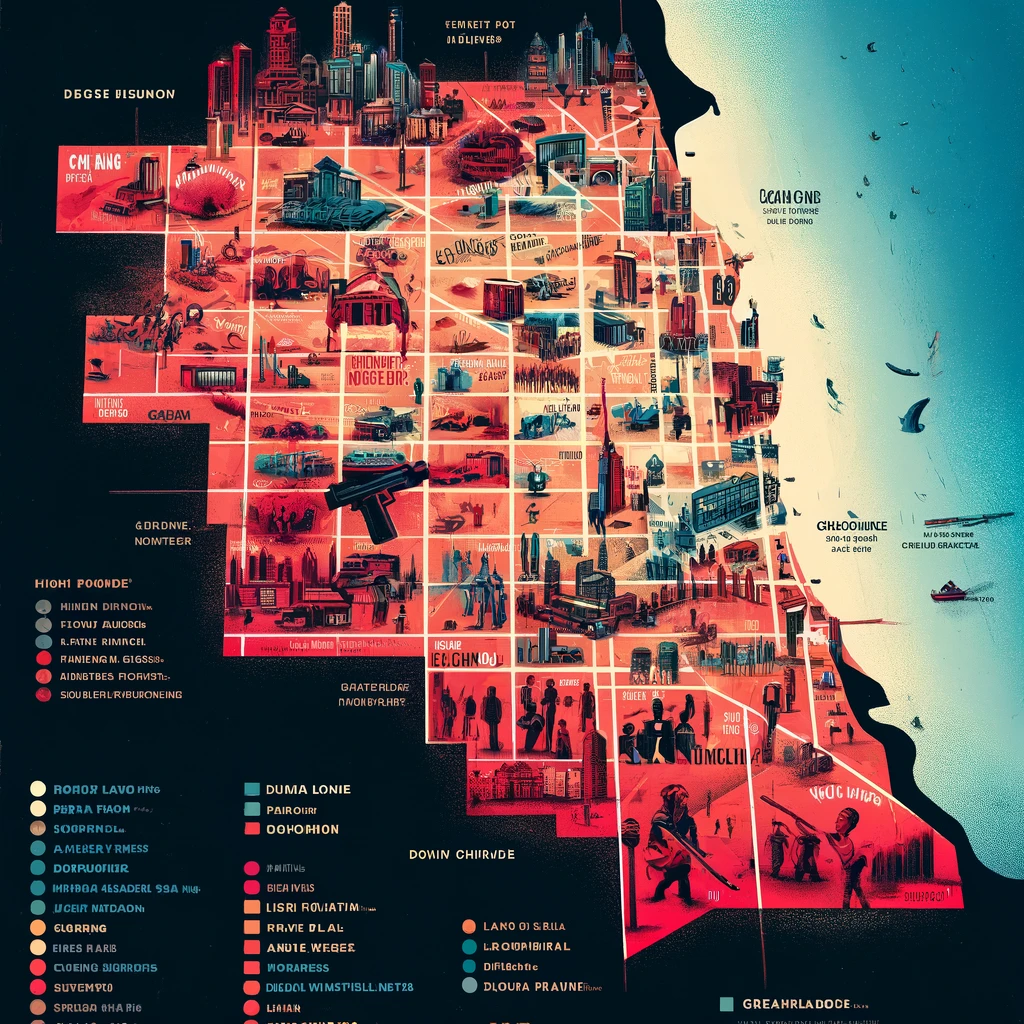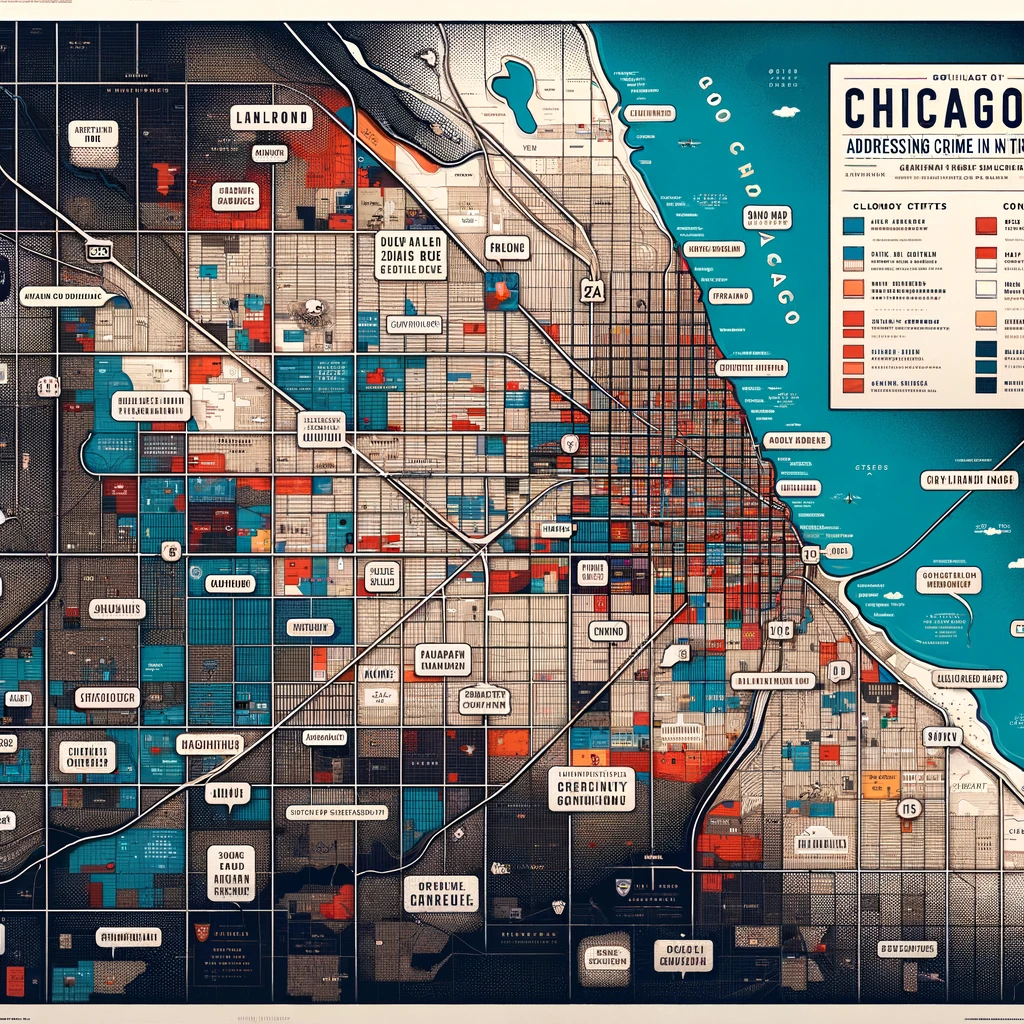
Chiraq, a colloquial term blending ‘Chicago’ and ‘Iraq,’ starkly symbolizes the violence that has beset parts of Chicago, likening the city’s deadliest areas to a war zone. This moniker has become synonymous with the crime waves that have periodically surged through the city, capturing national attention and stirring debates about urban policy, law enforcement, and community safety. The term Chiraq, though controversial, underscores the urgency of addressing crime in one of America’s most iconic cities.

Chicago, the third-largest city in the United States, is known for its significant cultural contributions, including music, food, and architecture. Yet, it is also a city marked by pronounced disparities in wealth, access to resources, and safety—factors that contribute to its complex crime dynamics. These disparities often manifest in higher crime rates in economically disadvantaged neighborhoods, where opportunities are scarce and systemic issues abound.
The city’s struggle with crime is multifaceted, involving gang conflicts, drug trafficking, and a high incidence of gun violence. Chicago’s crime waves are not merely statistics but represent a series of tragedies affecting real people and communities. Families and communities grapple with loss and fear, while policymakers and law enforcement wrestle with strategies to stem the tide of violence.
The term Chiraq gained additional prominence during the tenure of Chicago’s former resident, Barack Obama, who prior to his presidency, served as an Illinois state senator and U.S. senator. Obama’s deep connections to Chicago brought the city’s challenges into the national spotlight, particularly during his presidency. His administration sought to address the root causes of urban violence, advocating for comprehensive approaches that included policing reforms, economic support for impoverished neighborhoods, and investments in education and community services. Obama’s legacy in Chicago is intertwined with his efforts to improve the conditions that breed crime, though the effectiveness and sufficiency of these measures continue to be subjects of debate.
The technology-driven evolution of crime, termed ‘crimeware,’ adds another layer of complexity to Chicago’s safety challenges. Crimeware refers to software and technologies used by criminals to commit or facilitate the commission of crimes, particularly cybercrimes. In an urban context like Chicago, the concept of crimeware extends beyond digital spaces, reflecting the ways in which technology can influence and exacerbate traditional crimes. For example, social media has been implicated in the escalation of gang conflicts and in the organization of criminal activities, transforming traditional dynamics of criminal behavior in urban settings.
Chicago’s law enforcement agencies and community organizations are continuously adapting to the intersection of technology and crime. Efforts to counteract crimeware involve enhancing cyber capabilities within police forces, educating the public about cybersecurity, and employing technology to improve emergency responses and surveillance. These efforts are critical in a city where both crime and technology are rapidly evolving, requiring innovative and forward-thinking solutions.
Addressing crime in Chicago also involves tackling systemic issues such as unemployment, educational disparities, and housing instability. Community-based initiatives that focus on youth mentorship, job training, and health services are essential for long-term change. These programs aim to provide alternatives to crime, equipping individuals with the tools to build sustainable and productive lives. The success of these community-driven approaches is crucial for transforming the narrative of Chiraq into one of hope and resilience.
The ongoing battle against crime in Chicago is a complex interplay of enforcement, prevention, and community engagement. As the city moves forward, the lessons learned from both successes and setbacks can inform broader discussions about urban crime and solutions across the nation. Chicago’s story is one of resilience in the face of adversity, reflecting the broader American struggle with urban crime and the continuous search for peace and security in its bustling cities.
In conclusion, the intertwining of Chiraq, Barack Obama, crime waves, and crimeware in the narrative of Chicago paints a picture of a city at the crossroads of history, technology, and social change. The challenges are daunting, but the efforts to overcome them are a testament to the city’s enduring spirit and the collective will to forge a safer, more equitable future.
Map focusing on areas often referred to as Chiraq due to high crime rates in Chicago. This map uses a dramatic color palette to highlight zones with high levels of violence and includes urban landmarks like police stations and schools.
Map titled Chicago’s Struggle: Addressing Crime in the Shadow of Chiraq. This map highlights areas with significant crime rates and includes key landmarks such as police stations, community centers, and schools involved in crime prevention and community support.